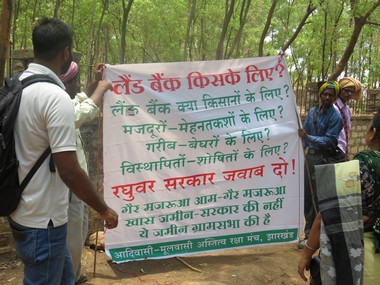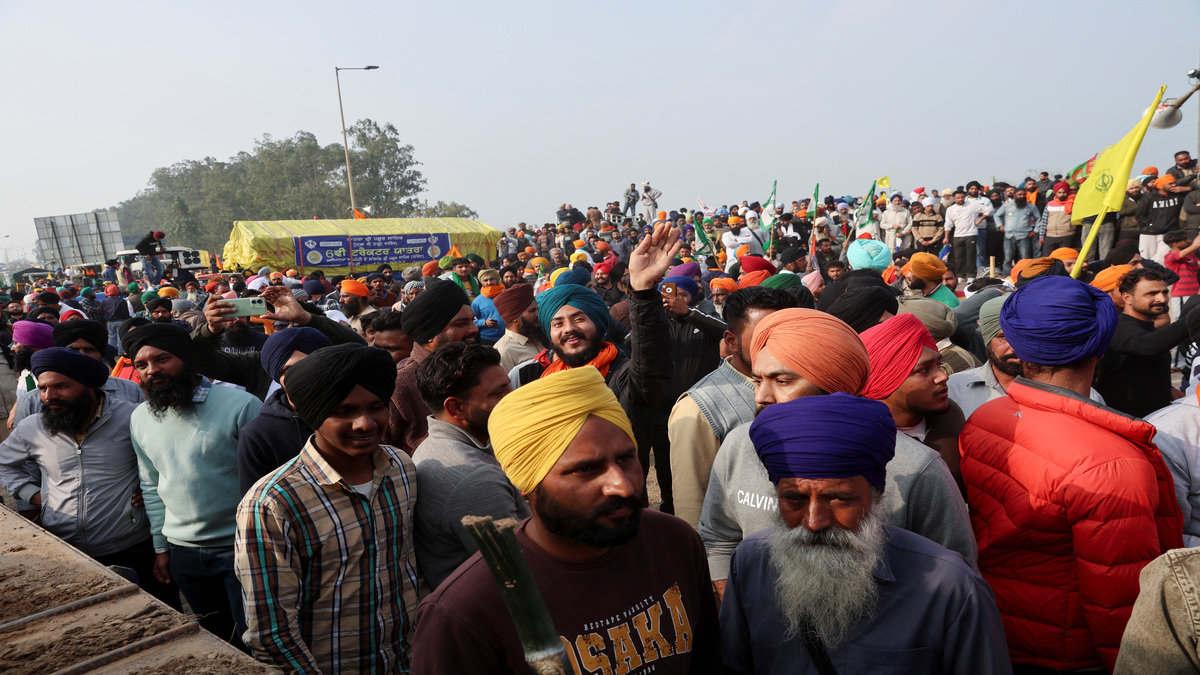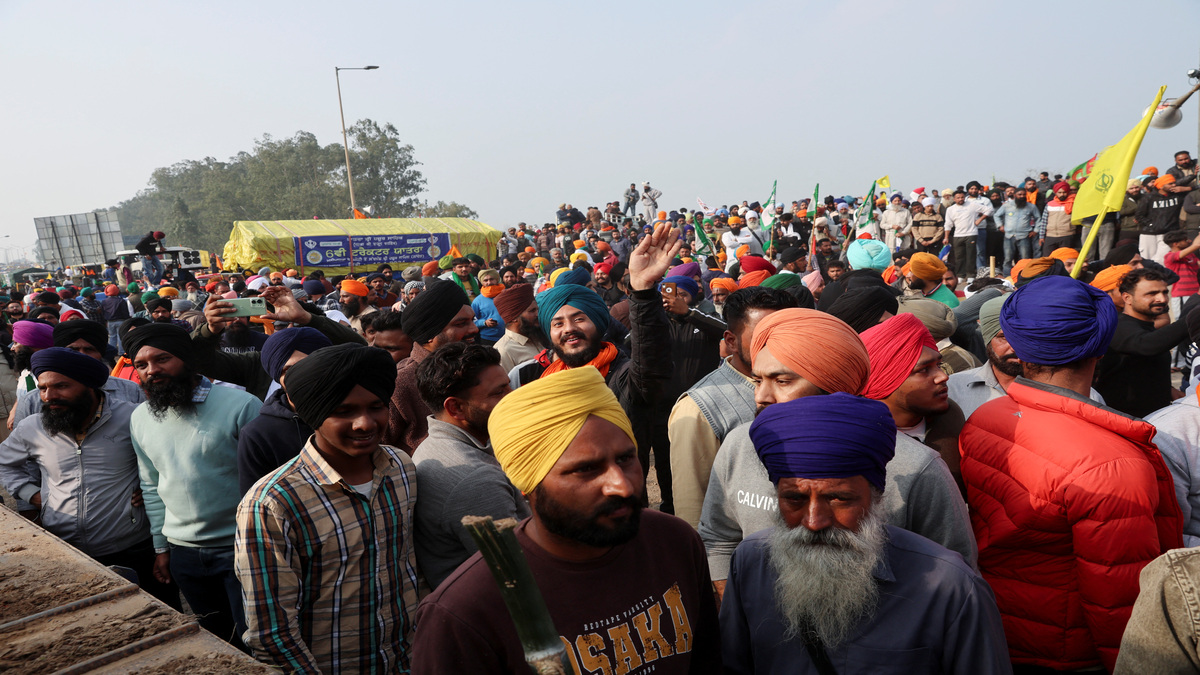Editor’s Note: In this eighteen-part series, we will attempt to address the tropes associated with the communities in question from an Adivasi perspective while also exploring the contemporary relationship of Adivasi citizens with the Indian government. This is part two of the series on Adivasi communities in peninsular India.
***
The traditional communitarian way of life and love for the environment of the nature-oriented Adivasi-Mulnivasi farmers alone can be a solution to the dire crises of environment, water and food facing the country. India’s history is a witness to the fact forests, mountains, rivers and lakes exist wherever the Adivasi-Mulnivasi farmers are.
Jharkhand’s history is witness to how the forebears of the Adivasis enriched its soil despite the presence of hostile creatures like serpents, scorpions, tigers and bears. It is also well-known that Adivasi heroes such as Sidu-Kanhu, Chand-Bhairav, Sindrai-Bindrai, Tilka Manjhi and Birsa Munda sacrificed their lives in India’s struggle for freedom. It is with the blood of these heroes that the Chhota Nagpur Tenancy (CNT) Act, 1908 , and the Santhal Parganas Tenancy (SPT) Act, 1949 — which act as protective shields for the natural heritage, jal-jangal-zameen (water-forest-land), of the Adivasi-Mulnivasi community – were written.
The state of Jharkhand comes under the Fifth Schedule of the Constitution of India. This means that 32 communities of this region, including Adivasis, Mulnivasis and farmers, are entitled to safeguards for the protection of water, forest and land resources, as well as in social, economic, linguistic and cultural spheres, educational advancement, health, and, reservation in government and other services. There have been special provisions made in the Constitution for the empowerment of these 32 communities at the social, cultural and political level.
The Constitution of India, by putting the Adivasi-Mulnivasi areas in the Fifth Schedule, has made the residents the owners of the land both within the limits of their villages as well as of the forests, trees, sand blocks outside them.
The _gram sabha_s (village councils) have a right even over the minor minerals and minor forest products of these areas. Under the Fifth Schedule, are also present the provisions for the Panchayat (Extension to Scheduled Areas) [PESA> Act, 1996 , and the Forest Rights Act, 2006. The right to practise the Manki-Munda, Padha, Manjhi-Pargana and Khuntkatti systems of landholding is also present in it.
The ownership rights of the community over the general and special fallow land, forest, rivers, canals and other types of community land are registered in the second part of the land records. These rights of the villagers are registered in the village note too. On the basis of this law, the government is simply the custodian of these kinds of land. The government may take care of the land, but does not have the ownership, and cannot sell it to private parties. But the moment the new amendments to Land Acquisition Act, 2013, and the Regional Policy, 2018 — brought by the government for speedy progress — come in effect in a land bank, the above-mentioned rights of the community will cease to exist.
To protect and restore all rights under the provisions of the Fifth Schedule are the responsibilities of the Governor.
Until now, the government has, through four memoranda, agreed to hand the water, forests and land of the Adivasi-Mulnivasi farmers over to thousands of corporates and capitalists. This is a direct attack on the provisions of the Fifth Schedule, as well as those of the PESA Act.
Fresh land survey or a ploy to rewrite records
A revision survey of land, currently underway in Jharkhand, will form the basis of a new set of land accounts, rendering the 1932 land accounts null and void. With this, the traditional right of the Adivasi-Mulnivasi farmers to their heritage will also cease.
With the application of the new amendments to Land Acquisition Act, 2013, in the state, and the creation of land banks to attract investors — while also allowing the online transfer of land to private companies — there will be a large-scale displacement of indigenous populations from their land. This displacement will occur silently.
In Jharkhand, 80 lakh people have been displaced from their forests and land due to development activities since Independence. They have neither been rehabilitated nor provided with any kind of alternate livelihood.
According to government reports, there are 12 lakh landless residents in the state. The transfer of general and special fallow land and forest land to investors to these new land banks and then to investors would increase the number of landless person manifold.
Once this system of land transfer is implemented, there would be an acute shortage of arable land in the state. The establishment of industries would lead to a depletion of natural water sources, further intensifying the water crisis. It would also drastically reduce the quantity of agricultural produce of the state. Besides, to attract investment, smart cities and their attendant routes would have to be built, which would necessitate further clearing of vast swathes of forest cover.
The price of development would be heavy on the environment, exacerbating global warming, the adverse effects of which would be borne by farmers as well as by the flora and fauna of the region. As a result, the food crisis would progressively worsen. In 2018, 18 people in the state died due to hunger; this number will only increase in the coming years.
To ensure rapid development by creating a favourable climate for investment and land acquisition, the BJP government has introduced land banks and their corresponding web portals. While inaugurating these web portals in 2016, Jharkhand chief minister Raghubar Das had declared that an investment-friendly climate would be created in order to attract the maximum number of investors. The land would be provided to investors without any delay through these land banks.
According to officials from Department of Revenue, Registration and Land Reforms, more than 21,01,471 acres of land have been marked for transfer through these land banks, which have been divided into blocks of general and special fallow land.
It should be known that general fallow land and special fallow land do not lie in the same areas. They lie in different plots of different accounts. Among those land that have been marked for the land banks, some measure 10 decimals (also written as dismal; one dismal equals 436 square feet) in area, some, 5 decimals and some, 20 decimals. It is also true that if the distance between a 10 decimal plot and a 5 decimal plot is 0.5 kilometres, another marked plot maybe 1 kilometre away from the first one. Between these marked pieces of land lie the privately owned land of farmers, which may be used for farming or other agricultural purposes.
In such circumstances, how does the government seek to transfer land for investment? While transferring land to them, what would become of the land owned by farmers which lie adjacent to the land marked for transfer? The land owned by farmers is sure to be affected adversely in the transfer of land marked for the investors, which would create a major conflict between the government, corporates, capitalist investors on the one hand, and the farmers on the other.
In order to carry out all tasks related to the acquisition, transfer and sale of land completely and efficiently, the present state government has placed all land-related records online. From quotations regarding the sale and purchase of land to the tax payable on land, a single-window has been instituted. By conducting all land-related transactions online, the government guarantees that improper and illegal land transactions would be stopped. The rule of the land mafia would end. This is because online transactions are characterised by their trustworthiness.
The government also guarantees that all land records would be available at a single click for one to view. Surely, it is only the educated who can avail of this advantage. All investors, big or small, are acquiring and owning land with the help of the government machinery. On the other hand are 90 percent of the Adivasi-Mulnivasi farmers, who have never even seen a computer. In such a scenario, it is very easy to estimate how many such farmers can avail of such opportunities.
The online loot of land
There have been increasing incidents of disappearing land records, cooked land accounts, and cases of land mafia members registering land of farmers in their own names. Many farmers have found to their shock, that the land they claim ownership of and have not sold to or bought from anyone, has been stated in Register 2 of the land records as having been sold off to another buyer.
Not only this; farmers have found receipts of tax deducted from their land produce at the Pragya Kendra (knowledge centre), while also coming across receipts of tax deducted from the same piece of land in the name of another (fake) owner in Register-II.
Niyarjan Topno of Poje village in Kamdara block of Gumla district said that the record of the land owned by his father — 39 acres — had its revenue deducted by a revenue official until 2014–15, after which the official stopped deducting it. The zonal officer told him that, henceforth, the revenue would be deducted online directly at the Pragya Kendra. When Topno went to the Pragya Kendra in 2015-16 to submit his revenue, people working there asked for his receipt of the previous year in order to find his records online.
On seeing his records, the Pragya Kendra manager told him that his records showed only 19 acres of land to his account. Similarly, Topno’s family has another 1 acre 10 decimals of land in another account. There is no record of it online. According to him, 20 acres of land from one account, and 1 acre 10 decimals of land from the other are shown to have disappeared.
Niyarjan is not alone though.
Sulami Topno of Bhanu toli (quarter), Marcha village, Torpa block, Khunti district said that her family used to have their revenue deduction receipts given by revenue department employees until 2014. In 2015, her nephew went to the Pragya Kendra to get a receipt for the revenue deduction where the manager told him that no receipt would be issued that day. He went to the Pragya Kendra a few days later, only to be told the same. Since 2014, they have not been issued a receipt for their revenue deductions.
Another resident, Sadwa Topno of Ramtolya Pahan quarter said that his family was issued a receipt in the name of Budhwa Pahan. In his two accounts, the total area of land was 32 acres 70 decimals. Until 2014, the receipts were being issued by revenue officials. But after that, when he went to the Pragya Kendra, he saw that his account number could not be found in the online records. Neither was the total area of land owned by him nor was the revenue due to be paid was available online. This meant that his account was not registered online, meaning 32 acres 70 decimals of land had disappeared.
In Sarna quarter of Garai village in Kamdara block, Gumla, Bada Suleiman’s family had total land of 25 acres distributed across two accounts. Until 2014, revenue officials would issue receipts. Then, they told them to visit the Pragya Kendra to avail of the receipts. But there, they found that only 9 acres of land were present in the online records. The remaining 16 acres of land has disappeared.
Philomen Surin of Salegutu village had 2 acres of land. At first, the officials would issue receipts, which went on until 2014. In 2015, when he went to the zonal office for the receipts, the officials told him that receipts would be issued only at the Pragya Kendras. On visiting the Kendra, he was informed that his account could not be found online, and hence, a receipt could not be issued to him. He approached the revenue officials again and explained his situation to them. At first, they said that nothing could be done as the government has impounded his land, but later stated that some greasing of palms was needed to manage the situation.
Sutugan Surin of Pimpi village also in Kamdara block found that the revenue receipts on 81 acres and 84 decimals of his family’s land were being issued in the name of Emanuel Surin (Pahan). They had another account of land of 3 acres for which receipts were issued in the name of Etwa Pahan. Until 2014, receipts were issued by revenue officials, after which they were directed to visit the Pragya Kendra. On visiting the Kendra, he found that neither of his accounts had been uploaded online. He said he was afraid that the government would impound the land and pass it off as having been voluntarily donated by its owner.
A ward member of the Kotbo village also in Kamdara block said that his family-owned 142 acres 77 decimals of land. Earlier, when revenue officials would issue receipts, it was fine. After all the records were placed online, he had to visit the Pragya Kendra to get the receipt. But on accessing his online records, he was shocked to find that only 77 decimals of land showed up in the records; the remaining 142 acres had disappeared. He approached the officials repeatedly, asking them to correct this blunder. They told him every time that they would, but nothing has been corrected so far.
Ram Pahan said that a lot of village land has been used to build roads and highways. The government has not compensated the farmers whose land has been used for such purposes. The road that was built from Turbul to Pokla used parts of several farmers’ land, but none of them have been compensated for them. Ram Pahan adds that one acre of his land has disappeared from the records.
The head of the Nawadih village, Stanislaus, said that the government is looting the general and special fallow land, which are rightfully the common property of the village folk.
It is tragic that the government is snatching away the general and special fallow land of Adivasi-Mulnivasis in order to transfer them online to investors. If this continues, all such communities who are dependent upon nature and the environment will be wiped out. The social value, language, culture, livelihood and identity of these communities will end.
Jharkhand’s economy is hugely dependent on its natural forests, land and water sources. Besides the land tilled by the farmer, the general and special fallow land serve as the source of much of the clean and nutritious food, water and air for the people.
This act of transferring land through online land banks to private companies can only be seen as a preparation to uproot and evict the Adivasi-Mulnivasis and farmers from their own land. There are huge errors in the online record-keeping of land. Countless farmers have lost their land, either whole or in part. Due to this, they cannot avail of the revenue share of their own land. The Adivasi-Mulnivasis are especially anxious in this regard.
Ninety-five percent of the local, rural population here has never seen a computer and cannot function on the internet. In such a scenario, making all transactions and records related to land online has only added to their difficulties.
The present government, through the provisions of its regional policy, is trying to accomplish two things: on the one hand, it is trying to settle and enrich investors from other regions in the state, while on the other, it is using these online land banks as deadly weapons against the Adivasi-Mulnivasis to rob them of their traditional settlements and heritage.
Dangers arising from online land banks
The constitutional rights and traditional heritage of the Adivasi-Mulnivasi face the following dangers due to the implementation of the land banks, etc, by the current government in Jharkhand:
- The ecological balance of the state that has been maintained by the indigenous people living in harmony with the forests, water and land, will be completely destroyed
- The implementation of land banks will be direct attacks on the CNT Act, 1908, and the SPT Act, 1949.
- The implementation of land banks would mean that the rights provided for by the Fifth Schedule of the Constitution of India would be refused
- The implementation of land banks would destroy the traditional, indigenous landholding systems such as the Khuntkatti system, the Wilkinson Rule (that legalised the Manki-Munda system under the British regime) and the Manjhi-pargana system, the effects of which would be seen as below:
- Traditional self-governing systems in Adivasi-Mulnivasi communities would collapse.
- It would destroy the geographical and geological constitution of the land on which the traditional farmers and the whole ecological balance of the region rests.
- The influx of people from other regions would destabilise the traditional social and communitarian structures and values of the Adivasi-Mulnivasi population.
- The traditional economy of the region dependent upon the forests, land and water sources will be destroyed.
- The local population of Adivasi-Mulnivasis would begin to decline due to the increase of populations from outside the region.
- Due to the destruction of their social and economic base, much of the indigenous population of the state will be forced to flee to other regions of the country.
- The traditional unified social structure of the Adivasi-Mulnivasis will be in complete disarray.
Read the article in Hindi below:
(The author is an indigenous leader and journalist from Jharkhand)


)




)
)
)
)
)
)
)
)